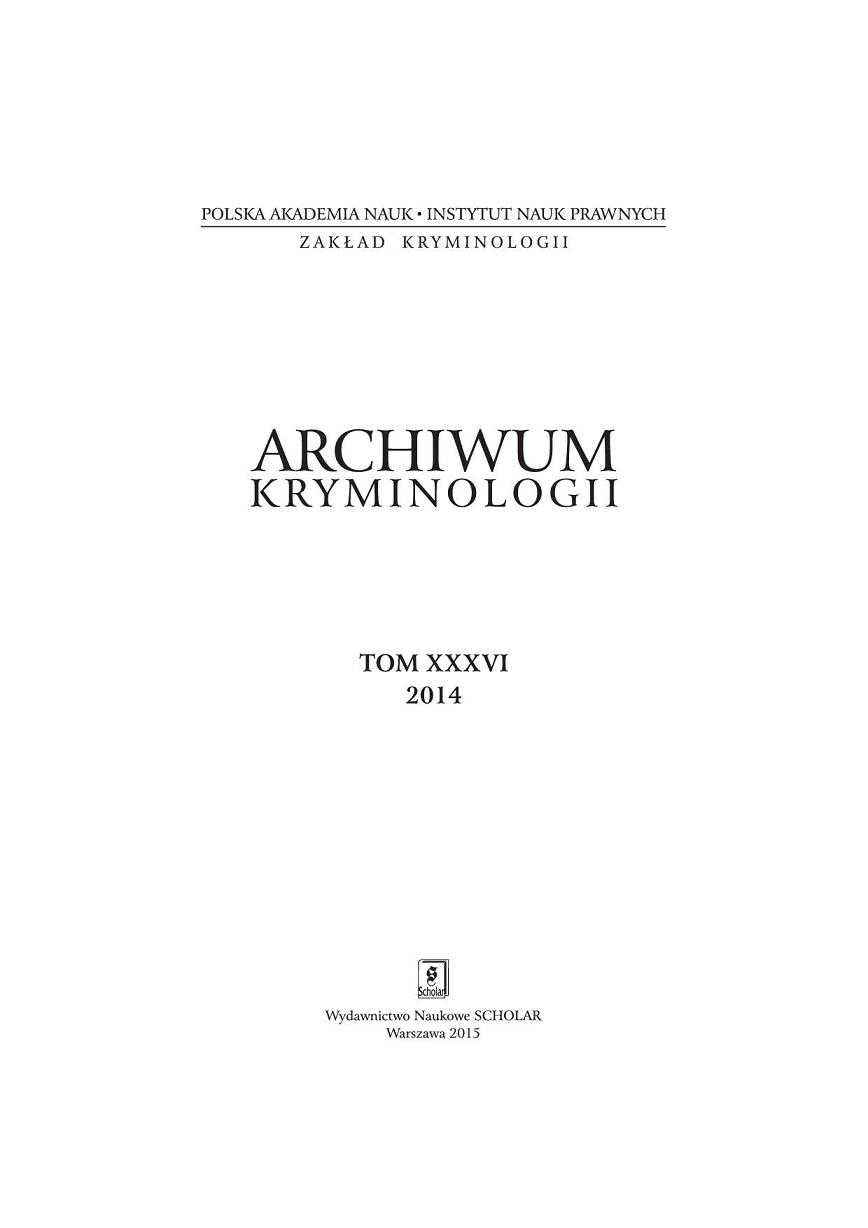Dylematy pracy penitencjarnej z więźniami odbywającymi skrajnie długie kary pozbawienia wolności
The Dilemmas of Working in Prisons with Prisoners Serving Very Long Sentences
Author(s): Piotr StępniakSubject(s): Law, Constitution, Jurisprudence
Published by: Instytut Nauk Prawnych PAN
Keywords: working in prisons; imprisonment; life imprisonment;
Summary/Abstract: This article focuses on the dilemmas of working in prisons with people serving the two most severe sentences, viz. 25 years imprisonment and life imprisonment. The author examines this from two angles. The first concerns the doctrinal and theoretical controversies surrounding the aims and purposes of serving long sentences. The author reviews the most prominent viewpoints in this area while pointing out the associated problems and dilemmas. The second is an attempt to relate the theoretical controversies surrounding the aims and purposes of the long prison sentences to the realities of prison practice, based as it is on three uniform systems of executing prison sentences, viz. standard (1 month to 15 years), 25 years and life. The author reports the results of his empirical research in this area. The author devotes special attention to the dilemmas that arise when a prisoner serving a very long sentence participates in a program of planned activities, some of which are ethical in nature. He keeps this in mind when attempting to evaluate prison practice. The fundamental question he poses should prompt a debate on the adequacy of this use of the rehabilitation model of executing a prison sentence and its consistency with the aims and purposes of this type of punishment, generally considered to be the best and most versatile. The author takes up the debate and examines the essence and the arguments of the controversy surrounding the purposes of long prison sentences. He considers which of the aims and purposes that appear in the prison literature are suitable for use in executing these sentences. The author consequently questions the purpose and moral acceptability of correctional activities. He points out that the main purpose of long sentences is to remove prisoners from society, which is difficult to reconcile with their corrective and rehabilitative functions. This illustrates the ethical ambiguity of correctional measures. The author later discusses the results of his own empirical studies, undertaken from this theoretical perspective. These focused on the following: 1. working with prisoners serving very long sentences in practice, and in particular, the sentencing regimen to which they are subjected; 2. the tasks and goals that prison staff set themselves in this connection; 3. whether and to what extent the designated ethical dilemmas are recognised in day-to-day prison work. This study comprised a diagnostic survey (a questionnaire and structured interviews), indirect observation (examining prison documents e.g. the personal files of prisoners serving very long sentences, prison work programs, prison regulations etc.). The questionnaire was completed by 71 prisoners serving the most severe sentences, including 15 life prisoners. Sixty two questionnaires were suitable for compilation. More than 5 interviews were conducted with life prisoners and 11 were conducted with prisoners serving 25-year sentences.
Journal: Archiwum Kryminologii
- Issue Year: 2014
- Issue No: XXXVI
- Page Range: 133-162
- Page Count: 30

